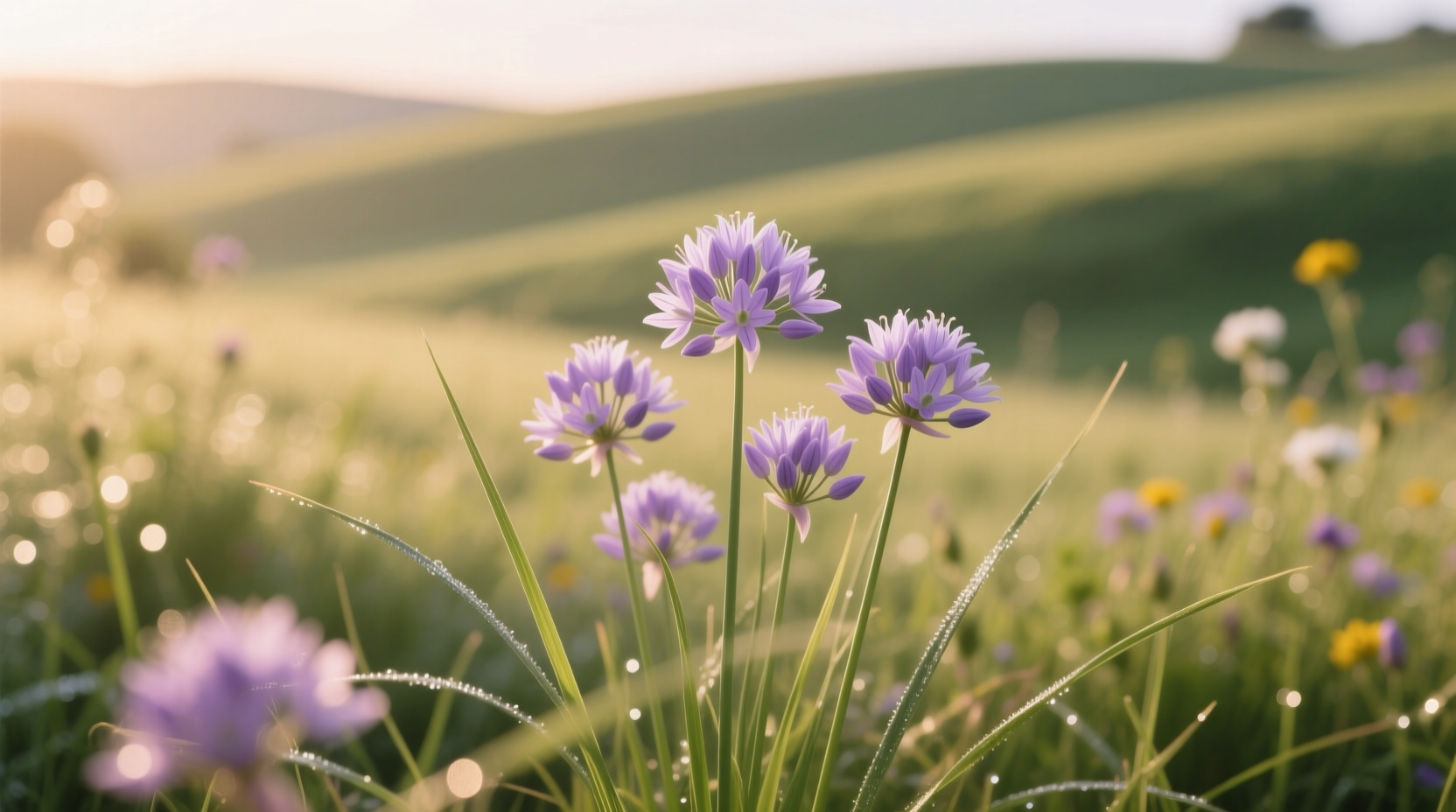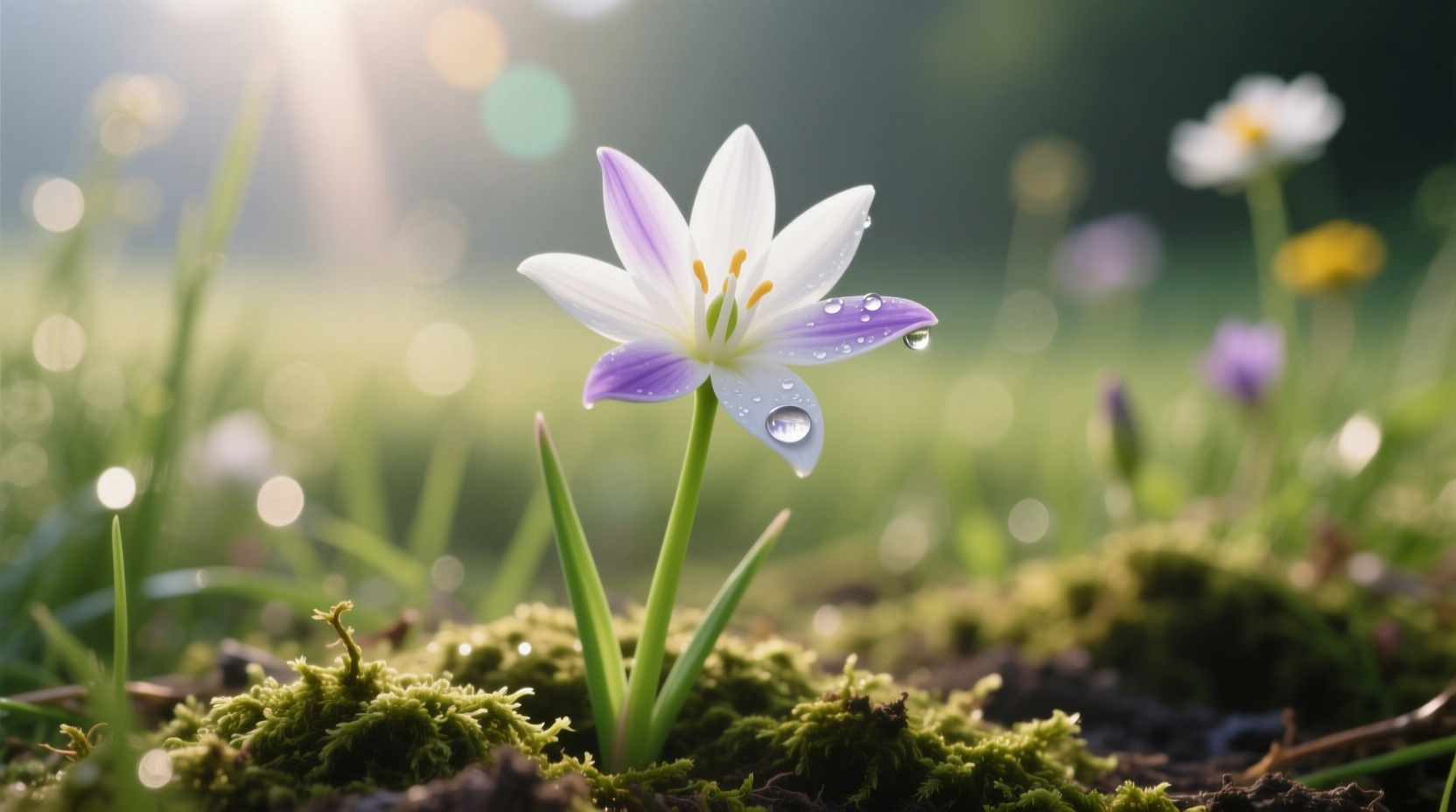Wild onion flowers are edible blossoms from various Allium species that grow naturally in fields and forests. These flowers feature spherical clusters of white, pink, or purple star-shaped blooms atop hollow stems, with a distinctive onion aroma when crushed. Correct identification is critical as toxic look-alikes like death camas can be fatal if consumed.
Foraging for wild onion flowers offers a delicious way to connect with nature's bounty, but requires careful identification to ensure safety. Unlike cultivated onions, these wild varieties emerge in specific seasons and habitats, providing unique culinary opportunities for adventurous food enthusiasts. This guide delivers essential knowledge to confidently identify, harvest, and enjoy these flavorful botanical treasures while avoiding dangerous mistakes.
Why Proper Identification Matters Most
Mistaking toxic plants for wild onions causes numerous poisoning incidents each year. The most dangerous look-alike, death camas (Zigadenus venenosus), grows in similar habitats and blooms at the same time as some wild onion species. Unlike true onions, death camas lacks the characteristic onion scent and features six stamens with white filaments instead of the three prominent stamens found in Allium species.
| Feature | Wild Onion (Allium) | Death Camas (Zigadenus) |
|---|---|---|
| Scent when crushed | Distinct onion/garlic aroma | No onion scent (honey-like or none) |
| Flower structure | Spherical cluster of star-shaped flowers | Loose cluster of bell-shaped flowers |
| Stem | Hollow | Solid |
| Leaves | Flat or cylindrical, grass-like | Lance-shaped with parallel veins |
This critical distinction comes from research by the USDA Forest Service's Poisonous Plant Research Laboratory, which documents numerous cases of misidentification leading to severe gastrointestinal distress and hospitalization (USDA Poisonous Plant Research Laboratory).
Seasonal Blooming Patterns Across North America
Wild onion flowers don't follow a single blooming schedule—they vary significantly by species and region. Understanding these patterns helps foragers time their harvests correctly and avoid confusion with toxic plants that may share overlapping seasons.
Early Spring (March-April): Wild garlic (Allium ursinum) emerges in eastern forests with white flower clusters. Western regions see nodding onion (Allium cernuum) beginning to bloom in mountain meadows.
Late Spring (May-June): Meadow garlic (Allium canadense) produces pink blossoms across North American prairies. This coincides with death camas blooming in western regions, making scent verification essential.
Summer (July-August): Rock onion (Allium acuminatum) flowers in rocky mountain areas. At this stage, many toxic look-alikes have finished blooming, reducing identification risks.
The University of California's Jepson Herbarium confirms these seasonal patterns through decades of field observation, noting that "flowering time remains one of the most reliable indicators for distinguishing between Allium species and their toxic counterparts" (Jepson Herbarium).
Step-by-Step Identification Process
Follow this verification sequence before harvesting any wild onion flowers:
- Smell test: Crush a small portion of the stem or leaf. True wild onions emit an unmistakable onion or garlic aroma.
- Stem inspection: Carefully split the stem. Allium species have hollow stems, while toxic look-alikes typically have solid stems.
- Flower examination: Look for the characteristic spherical umbel (cluster) of star-shaped flowers with six petals.
- Root verification: Dig up a small specimen to check for the distinctive onion-like bulb with fibrous roots.
Never rely on visual identification alone. The National Park Service emphasizes that "multiple verification methods significantly reduce the risk of accidental poisoning when foraging for wild Allium species" (National Park Service Botany Program).
Culinary Applications of Wild Onion Flowers
Once properly identified, wild onion flowers offer versatile culinary possibilities beyond their edible bulbs and greens. Their delicate floral notes with subtle onion flavor enhance dishes without overwhelming other ingredients.
Chef Maya Gonzalez recommends these preparation techniques developed through her research of indigenous foraging traditions:
- Raw applications: Scatter whole flowers over salads or use as garnish for soups and roasted vegetables
- Vinegar infusions: Steep flowers in white wine vinegar for two weeks to create delicate onion-flavored vinegar
- Compound butter: Blend chopped flowers with softened butter for grilled meats or vegetables
- Pickling: Preserve flowers in vinegar brine with mustard seeds for unique sandwich toppings

Responsible Harvesting Practices
Sustainable foraging ensures wild onion populations remain healthy for future generations. Follow these ethical harvesting guidelines:
- Harvest no more than 10% of any single patch to maintain plant populations
- Use scissors to cut flowers rather than pulling entire plants
- Avoid areas potentially contaminated by pesticides or pollutants
- Never harvest in protected wilderness areas without proper permits
The North American Foraging Council's sustainability guidelines state that "responsible harvesters take only what they need and leave abundant plants to reproduce and support local ecosystems" (North American Foraging Council).
Storage and Preservation Methods
Wild onion flowers have a short shelf life but can be preserved through several methods:
- Refrigeration: Store in a glass of water like cut flowers, covered with a plastic bag (lasts 3-5 days)
- Freezing: Blanch flowers for 30 seconds, then freeze in airtight containers (best used within 6 months)
- Drying: Hang small bunches upside down in a dark, well-ventilated space (dried flowers work well in rubs and spice blends)
- Infused oils: Submerge flowers in high-quality olive oil for 2-3 weeks, then strain (use within 1 month for safety)
Remember that dried wild onion flowers lose much of their delicate floral notes but retain their onion flavor, making them better suited for cooked applications rather than fresh garnishes.
Common Misconceptions About Wild Onions
Several persistent myths create unnecessary confusion for foragers:
- Myth: All wild onions are safe to eat if they smell like onions
Fact: While scent is crucial, some toxic plants may grow alongside true onions and get沾染 (contaminated) with onion scent through soil contact - Myth: Wild onions only grow in certain regions
Fact: Allium species grow on every continent except Antarctica, with over 850 species worldwide - Myth: The flowers are less flavorful than bulbs
Fact: Flowers offer a more delicate, floral onion flavor perfect for finishing dishes
These clarifications come from the comprehensive research of the International Allium Society, which maintains the world's largest database of Allium species characteristics and distributions.
When to Avoid Harvesting Wild Onions
Certain conditions make wild onion foraging unsafe or inadvisable:
- After heavy rainfall that could wash contaminants into foraging areas
- Near agricultural fields where pesticide drift might occur
- In urban environments with potential soil contamination
- During drought conditions when plants may concentrate toxins
- When plants show signs of disease or insect infestation
Understanding these limitations ensures your wild onion harvesting remains both safe and sustainable. When in doubt about any specimen's identity or safety, always choose caution over curiosity.











 浙公网安备
33010002000092号
浙公网安备
33010002000092号 浙B2-20120091-4
浙B2-20120091-4